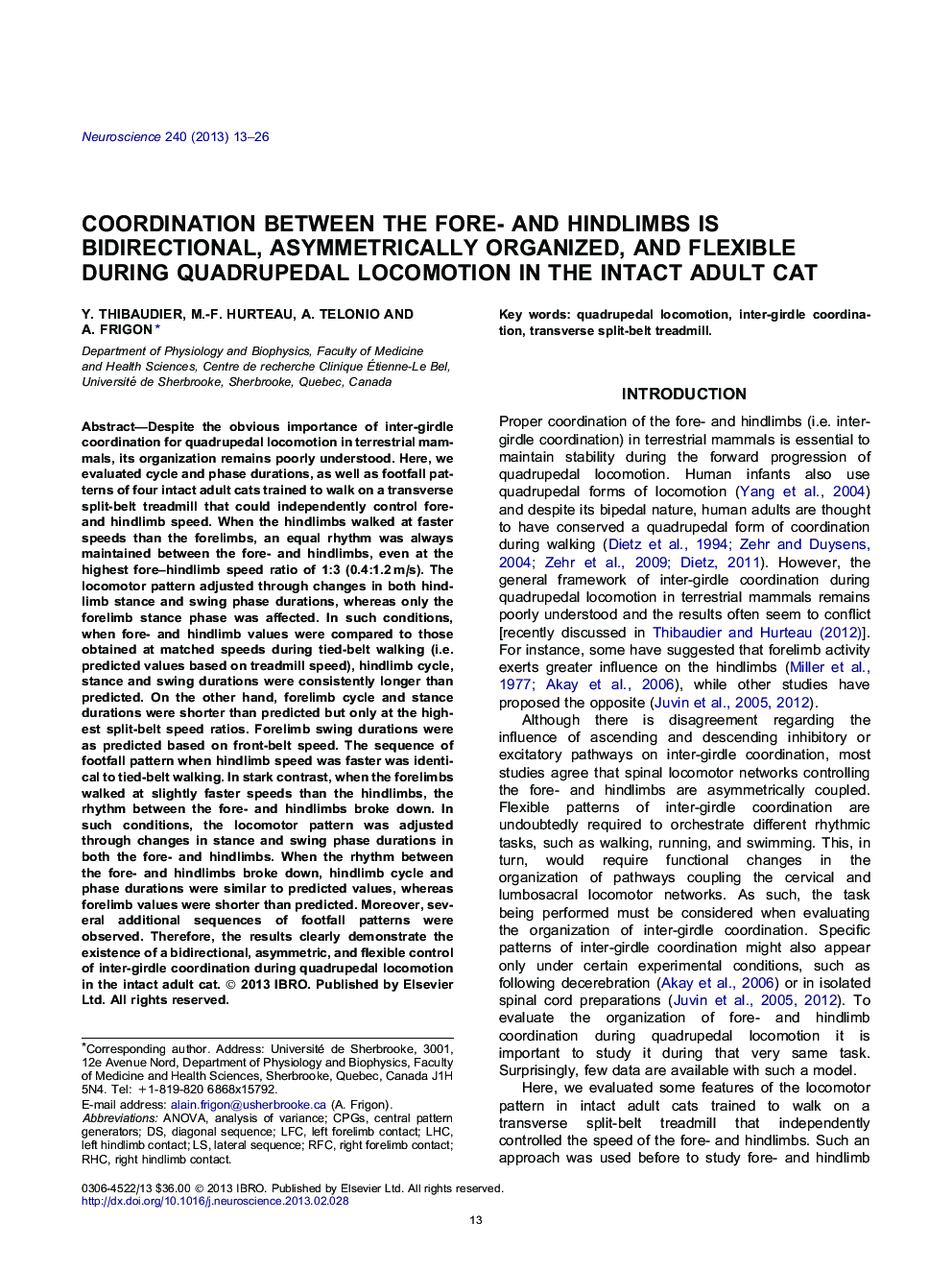| کد مقاله | کد نشریه | سال انتشار | مقاله انگلیسی | نسخه تمام متن |
|---|---|---|---|---|
| 6274876 | 1614836 | 2013 | 14 صفحه PDF | دانلود رایگان |
Despite the obvious importance of inter-girdle coordination for quadrupedal locomotion in terrestrial mammals, its organization remains poorly understood. Here, we evaluated cycle and phase durations, as well as footfall patterns of four intact adult cats trained to walk on a transverse split-belt treadmill that could independently control fore- and hindlimb speed. When the hindlimbs walked at faster speeds than the forelimbs, an equal rhythm was always maintained between the fore- and hindlimbs, even at the highest fore-hindlimb speed ratio of 1:3 (0.4:1.2Â m/s). The locomotor pattern adjusted through changes in both hindlimb stance and swing phase durations, whereas only the forelimb stance phase was affected. In such conditions, when fore- and hindlimb values were compared to those obtained at matched speeds during tied-belt walking (i.e. predicted values based on treadmill speed), hindlimb cycle, stance and swing durations were consistently longer than predicted. On the other hand, forelimb cycle and stance durations were shorter than predicted but only at the highest split-belt speed ratios. Forelimb swing durations were as predicted based on front-belt speed. The sequence of footfall pattern when hindlimb speed was faster was identical to tied-belt walking. In stark contrast, when the forelimbs walked at slightly faster speeds than the hindlimbs, the rhythm between the fore- and hindlimbs broke down. In such conditions, the locomotor pattern was adjusted through changes in stance and swing phase durations in both the fore- and hindlimbs. When the rhythm between the fore- and hindlimbs broke down, hindlimb cycle and phase durations were similar to predicted values, whereas forelimb values were shorter than predicted. Moreover, several additional sequences of footfall patterns were observed. Therefore, the results clearly demonstrate the existence of a bidirectional, asymmetric, and flexible control of inter-girdle coordination during quadrupedal locomotion in the intact adult cat.
⺠Inter-girdle coordination is bidirectional and asymmetrically organized. ⺠When hindlimb speed is faster, an equal rhythm is maintained between girdles. ⺠When forelimb speed is faster, the rhythm between girdles often breaks down. ⺠When forelimb speed is faster, new sequences of footfall patterns emerge.
Journal: Neuroscience - Volume 240, 14 June 2013, Pages 13-26
